Storms uncover haunting remains of Victorian shipwreck on Cornish beach 131 years after it was sunk
- The wreck in Carbis Bay, near St Ives, has remained largely hidden this winter
Storms have uncovered the terrifying remains of a Victorian shipwreck on a Cornish beach, 131 years after it sank.
The wreck in Carbis Bay, near St Ives, has remained largely hidden under the sand this winter.
But on February 26, stormy seas battered Cornwall’s north coast, stripping sand from the beach, exposing the remains of the shipwreck.
The iron steamships Bessie, Cintra and Vulture were all beached during a violent storm on November 18, 1893.
One of the ships, the Cintra, was en route from Newport to Dartmouth and was battered by the storm while at anchor.
Storms have uncovered the terrifying remains of a Victorian shipwreck on a Cornish beach, 131 years after it sank
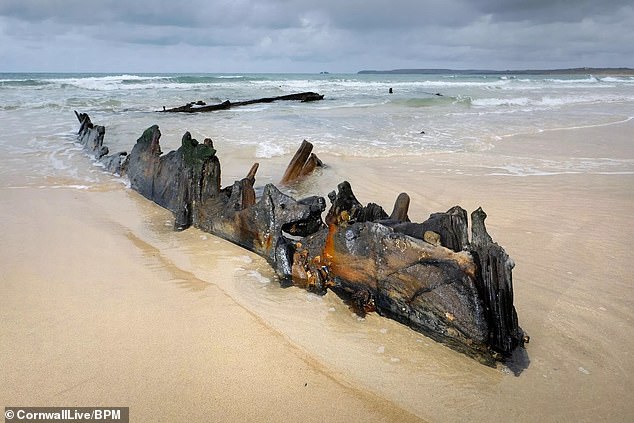
The wreck in Carbis Bay, near St Ives, has remained largely hidden under the sand this winter
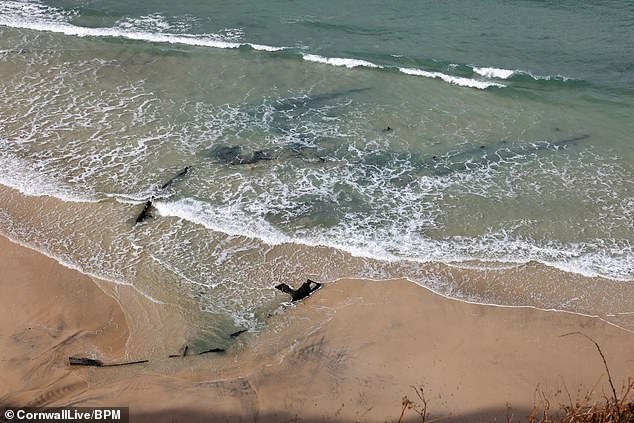
But on February 26, stormy seas battered Cornwall’s north coast, stripping sand from the beach, revealing the remains of the shipwreck.
Five members of the Cintra’s crew were rescued by a buoy, but seven drowned. One member of the crew is said to have hung on the rigging for over an hour.
There is little left but the ship hulls. The Cintra’s anchor was recovered from the seabed in 1959 and can be seen today at Smeaton’s Pier in St Ives.
Both crews of the Bessie and Vulture were rescued.
The jagged fragments of the steamship Bessie are a common sight in Carbis Bay and often reveal themselves after winter storms at high tide.
This winter, however, the wrecks have remained almost completely hidden beneath the sand.
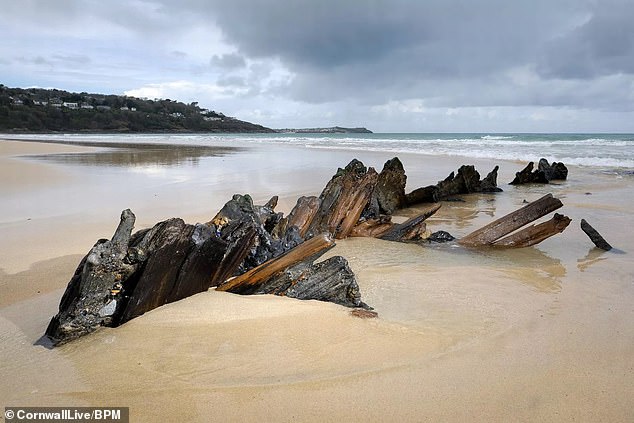
The iron steamships Bessie, Cintra and Vulture were all beached during a violent storm on November 18, 1893
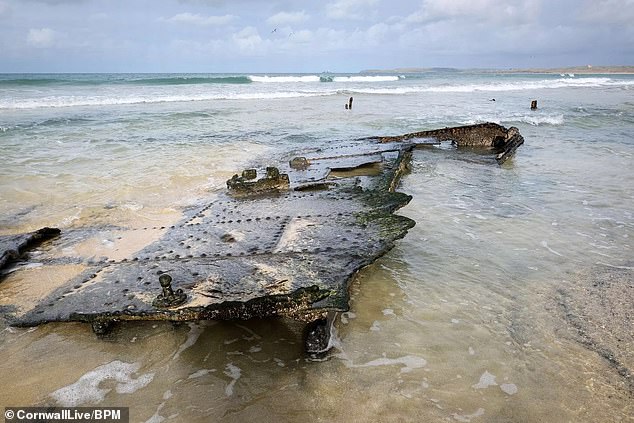
One of the ships, the Cintra, was en route from Newport to Dartmouth and was battered by the storm while at anchor
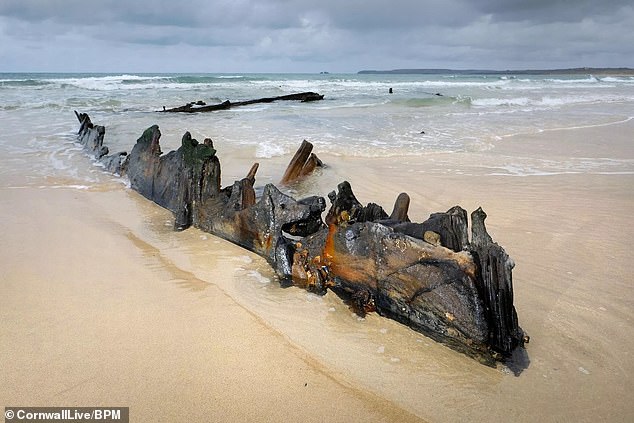
The jagged fragments of the steamship Bessie are a common sight in Carbis Bay and often reveal themselves after winter storms at high tide
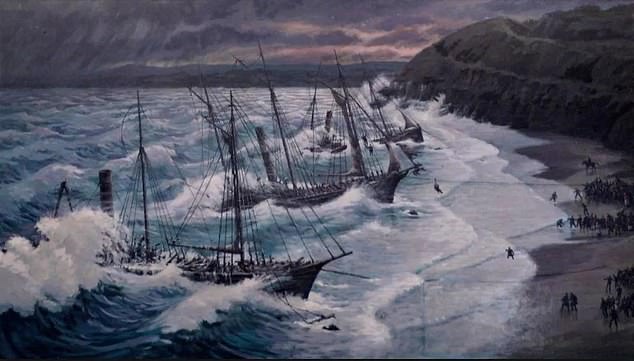
Painting of the storm in 1893 when the ships sank
After the storm at the beginning of the week, the skeletal remains of both the Bessie and the Vulture could be uncovered at low tide.
However, on Thursday – when these photos were taken – large parts of the wrecks remained below the low-water mark.
If the wrecks remain sand-free for another week, they should be visible in seven days during the larger low tide in the spring.
In January 2023, the shipwrecks of the Bessie, Vulture and Cintra were all uncovered after winter storms.
The Vulture’s boilers were once a children’s playground until they were removed for scrap metal in World War II.
A number of other ships were lost that same night and were found in other parts of Cornwall.
The Hampshire, which lost its entire crew at sea, and the Rosedale, were washed up on the beach at Porthminster.
